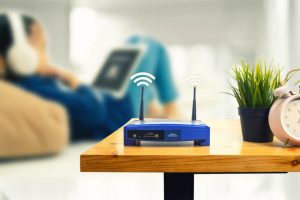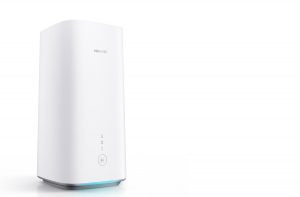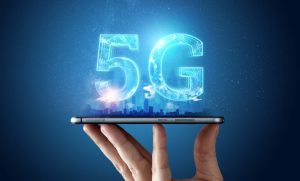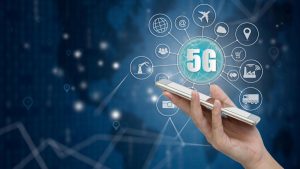There has been a lot of talk and uncertainty surrounding 5G. With questions like; what is 5G, how does it work, what are the risks, when and where will it be available, and what will it cost? Fake news may even have you believing a base station could create and spread a virus, like Covid-19. If you’re still not clued up on the ins-and-outs of 5G, this handy guide below will help to answer some of the questions around 5G and its launch in South Africa.
What is 5G?

Many of us will remember when phones first started accessing the internet. WAP developed into slow 2G, often patchy 3G and then the upgrade to the current 4G/ LTE technology. With 4G/ LTE technology, the ever-increasing speeds started matching and competing with traditional fixed-line ADSL infrastructure. Now, 5G (the 5th Generation) is the next evolution of this technology. It has the capability to offer faster, cheaper and a more stable connection than even Fibre and increase online coverage across South Africa.
How does 5G differ from Fibre?
Let’s start off with understanding the difference between Fibre and Broadband internet. Any internet connection that is faster than the old dial-up from the 80’s is commonly referred to as broadband internet. Broadband refers to a band or grouping of radio frequencies that carry signal (in this case 5G data). Fibre still transmits a signal, but it does so using a single frequency laser (light) over a fibre optic cable – two different methods offering a similar service.
Which is better 5G or Fibre?

As fibre internet has entered into the realm of connectivity, we have seen a massive jump in speeds and ever faster internet connectivity. Fibre has proven to be fast, stable and allow for data to be transferred over much longer distances without significant signal loss. Is it however heavily limited in the fact that it needs a physical connection (fibre cable) to transfer data. Laying this fibre “backbone” is probably the reason your street has been dug up recently. Once your block or suburb has Fibre, you still need a service provider to install a connection between the backbone and your home, which at best takes days, at worst, weeks or even months.
If Fibre is so fast, what are the benefits of 5G?
Since 5G works over radio frequency, it does not require cables to be laid, roads to be dug up and it can be activated immediately. The frequencies used to transmit the signal support faster speeds than current fibre technology offer. This makes 5G a much more suitable solution for mobile internet, and it will be essential for Internet of Things (IoT) devices such as connected homes and appliances, self-driving cars, drones, cameras and more.
How fast will 5G be?

Very fast! With indicative speeds of 20 Gigabytes download per second and 10GB upload (4G is at 300mbps and 75MBmbps) and a latency of less than one millisecond. 5G has the ability to blow Fibre away in terms of speed. In the best-case scenario, streaming an 8K Full HD movie online should be a breeze with virtually zero lag.
When will 5G be available?
While Vodacom has officially launched their 5G service, there are only 20 active base stations – 18 in Gauteng and 2 in Cape Town. We are still a while away from mass adoption. Like 4G and 3G before it, we can expect Vodacom to focus its rollout program to major cities and hubs first before moving to smaller areas.
What will 5G cost?

To use the 5G network you will first need a 5G device. Your current phone or modem will not be able to transmit and decode the 5G signal. One of the first 5G smartphones that will be released in South Africa is LG’s V50 ThinQ with a suggested retail price of R14,299. Some of the first 5G routers to be launched in South Africa include the Fastmile 5G Gateway 1 Huawei 5G CPE Pro, with prices landing anywhere between R6,499 to R12,999.
Find the best prices on 5G devices online with PriceCheck now:
Will a 5G Device work in areas with no 5G Coverage?
Yes, devices will still support current frequency ranges. 5G devices will just include the ability to process 5G signal. The handover between frequencies should also be seamless. Building a broad 5G network will take years, it would be nonsensical to develop a device that doesn’t support current 3G and 4G technology.
What are the downsides of 5G?

Currently, our 4G / LTE connections use frequencies that are below 6Mhz to deliver internet speeds. 5G connections will use spectrum up to 24Ghz. For cellular to match Fibre internet, networks will require access to a wider range of spectrum frequency. This frequency allocation has been strictly controlled and limited by the South African government.
The lower the frequency spectrum, the further your radio wave can travel, and the more it can penetrate through materials. For example, your FM radio operates up to 300Mhz and has a wavelength of around 1m. Current 4G/ LTE cellphones use frequencies from 900Mhz and up. Its wavelengths are measure in centimetres. With 5G, the wavelength is measured in millimetres. This does pose some problems for the design of 5G networks, as millimetre waves are easily blocked by foliage and buildings. For sufficient coverage, it will require many closely spaced micro base stations, called small cells.
Fortunately, these stations are much cheaper, smaller and require less power than traditional cell towers. They can be placed atop buildings, light posts or anywhere outside your home.
Is 5G it safe?

Many of the health concerns are over 5G’s use of millimetre-wave radiation but not all radiation is equal.
“There’s often confusion between ionising and non-ionizing radiation because the term radiation is used for both,” said Kenneth Foster, a professor of bioengineering at Pennsylvania State University. “All light is radiation because it is simply energy moving through space. It is ionising radiation that is dangerous because it can break chemical bonds.”
“Ionising radiation is the reason we wear sunscreen outside because short-wavelength ultraviolet light from the sky has enough energy to knock electrons from their atoms, damaging skin cells and DNA. Millimetre waves used for 5G, on the other hand, are non-ionizing because they have longer wavelengths and not enough energy to damage cells directly.”
Did 5G create or help spread COVID-19?
Fake news around the launch of 5G has been spreading for a while. What possibly started as a joke or a hoax, has spread and developed a cult-like following. The origins are unclear, but most people will realise the absurdity of such a claim – similar to the flat earth conspiracy theories. For those still a little unsure, it is verifiably untrue. Viruses are parasitic organisms. To suggest a cellular tower can create and spread structured genetic material, out of thin air, is patently false.
Find the best prices on 5G devices online with PriceCheck now:





